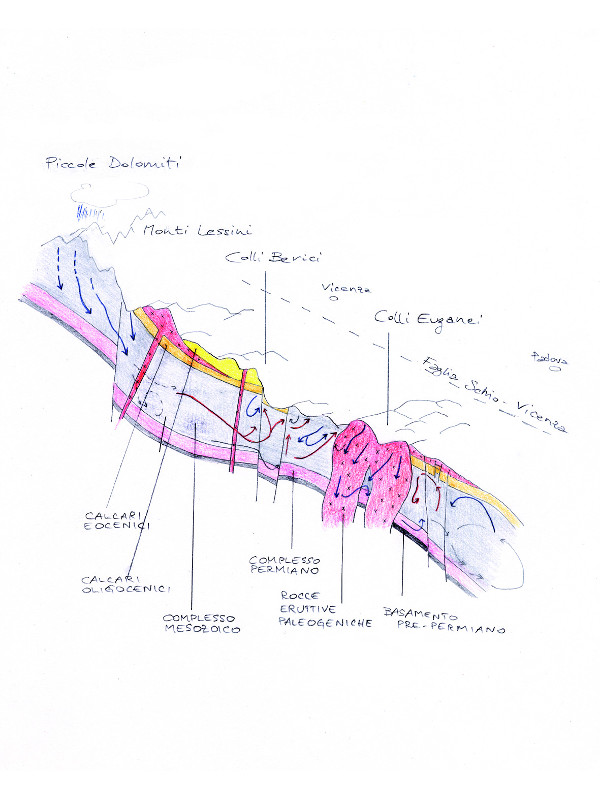The Euganean Hills are among the most renowned areas in Italy as far as hot springs are concerned. These are an important tourist attraction on an international scale. The hydromineral basin of the Euganean Hills includes the following towns: Abano Terme, Arquà Petrarca, Baone, Battaglia Terme, Due Carrare, Galzignano Terme, Monselice, Montegrotto Terme, Teolo and Torreglia, with a total extent of approximately 23 square kilometres. Over 130 thermal spas and around 220 baths, with a capacity of over 13,000 beds, make the Euganean hot springs one of the most important and prestigious attractions at a European level.
The properties of Euganean hot springs have been known since ancient times, as shown by the ancient Veneti tribe's worship of the god Aponus, who was attributed with healing powers. Archaeological traces that are still visible, particularly in Montegrotto Terme, show how large thermal baths were built during Roman times, mentioned also in priceless accounts written by authors such as Livy and Pliny the Elder. A new drive to exploit geothermal resources came with the Most Serene Republic of Venice and later (from the eighteenth century on), while in the nineteenth century, large hotels became popular.
The origins of hot springs
Contrary to what you'd expect, there is no relation whatsoever between hot springs and volcanic phenomena in the Euganean Hills, phenomena which are now too old to constitute a source of heat.
In the mid-1970s, in-depth analyses and research had already established that the hot springs originate from rainwater and that it falls to the ground in a mountain area pin-pointed north-north-east of the Euganean Hills, mainly in the sedimentary pre-Alp area of the Piccole Dolomiti (or" Little Dolomites", Mount Pasubio in the Carega Group). Here the water begins its slow descent into the fractures of chalky permeable rocks, reaching a depth of around 3,000 metres, till it hits impermeable crystal bedrock. During its descent, the water heats up due to geothermal factors (the natural heat of the earth's crust as you travel closer towards the mantle), salinity and slight radioactivity.
The emergence of rainwater in the Euganean HillsThe presence of thermal/mineral water in the Euganean Hills is attributed to the obstacle posed by a mass of solid and impermeable lava and a series of fractures in this same rock that permit the rapid rise of water, driven by the hydraulic pressure of the entire underground basin. The amount of time the water takes to complete its journey from the location where the rainwater fell to the Euganean basin is - according to recent research - very long, far longer than the 25 years presumed in initial research.
When the water returns to the surface in the area of the Euganean hills, it has an average temperature of 75°C, a certain level of radioactivity and many mineral salts originating from rock erosion (chlorine, sodium, potassium, magnesium, sulphur, bromide, iodine and silicon dioxide). As regards its temperature, the water is classed as "hyperthermal" (T > 40 °C), with peaks of approximately 86 °C. As regards its chemical composition, it consists of two types: sodium-chlorinated water and saline-bromide-iodine water.
Thermal water is an essential element in the preparation of plant- and mineral-based mud in special baths, obtained from the natural mineralisation of particular types of microscopic algae, the healing characteristic typical of the thermal basin.



